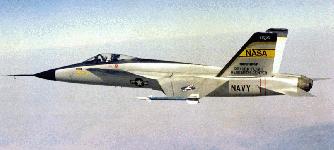




In the early 1970s the Air Force pressed for development of a new generation of lightweight fighters-single-seat jet aircraft "optimized" for agility and air combat maneuvering, with high thrust-to-weight ratios (above 1 to 1), and good acceleration. Out of this interest came the so-called "Lightweight Fighter" program. In January 1972, the Lightweight Fighter Program solicited design specifications from several American manufacturers. Participants were told to tailor their specifications toward the goal of developing a true air superiority lightweight fighter. General Dynamics and Northrop were asked to build prototypes, which could be evaluated with no promise of a follow-on production contract. These were to be strictly technology demonstrators. The two contractors were given creative freedom to build their own vision of a lightweight air superiority fighter, with only a limited number of specified performance goals. Northrop's entry was derived from the Cobra design. Northrop produced the twin-engine YF-17 using breakthrough aerodynamic technologies and two high-thrust General Electric YJ101 engines. General Dynamics countered with the compact YF-16, built around a single F100 engine.
Midway down the development path the stakes changed; what had been a technology demonstration became a Department of Defense competition for a new fighter for both the Air Force and Navy, and for allied nations as well. First flight of the YF-17 was in June 1974. By this time, the Air Force had decided to proceed with Air Combat Fighter (ACF) Program, based on flight testing of the YF-16 and YF-17 prototypes. The Navy was also initiating a program to develop a new VFAX in this time period--a strike fighter to replace both the F-4s and A-7s in its carrier air wings. When the Lightweight Fighter competition was completed early in 1975, both the YF-16 and the YF-17 showed great promise. The two prototypes performed so well, in fact, that both were selected for military service. The Air Force selected the F-16 to be produced for the Tactical Air Command, and the Navy was directed by Congress to base the VFAX on either the YF-16 or YF-17 designs. The Navy, unhappy with the outcome, proceeded independently with a derivative of the YF-17 Cobra, this evolving into the Navy's Northrop F-18 Hornet fighter program. To meet Navy requirements, considerable improvements in areas such as combat radius and radar capability were incorporated, in addition to carrier suitability features. The resulting redesign was extensive and, when the McDonnell Douglas design was selected as winner in 1976, it was assigned the F-18A designation.After sitting briefly in storage, the two YF-17 prototypes flew again, this time as development aircraft for the proposed F-18. At the request of the Navy, Dryden flew the first YF-17 for base drag studies and to evaluate the maneuvering capability and limitations of the aircraft. NASA pilots-all of whom got at least one flight in the plane-and engineers examined the YF-17's buffet, stability and control, handling qualities, and acceleration characteristics.
Specifications | |

